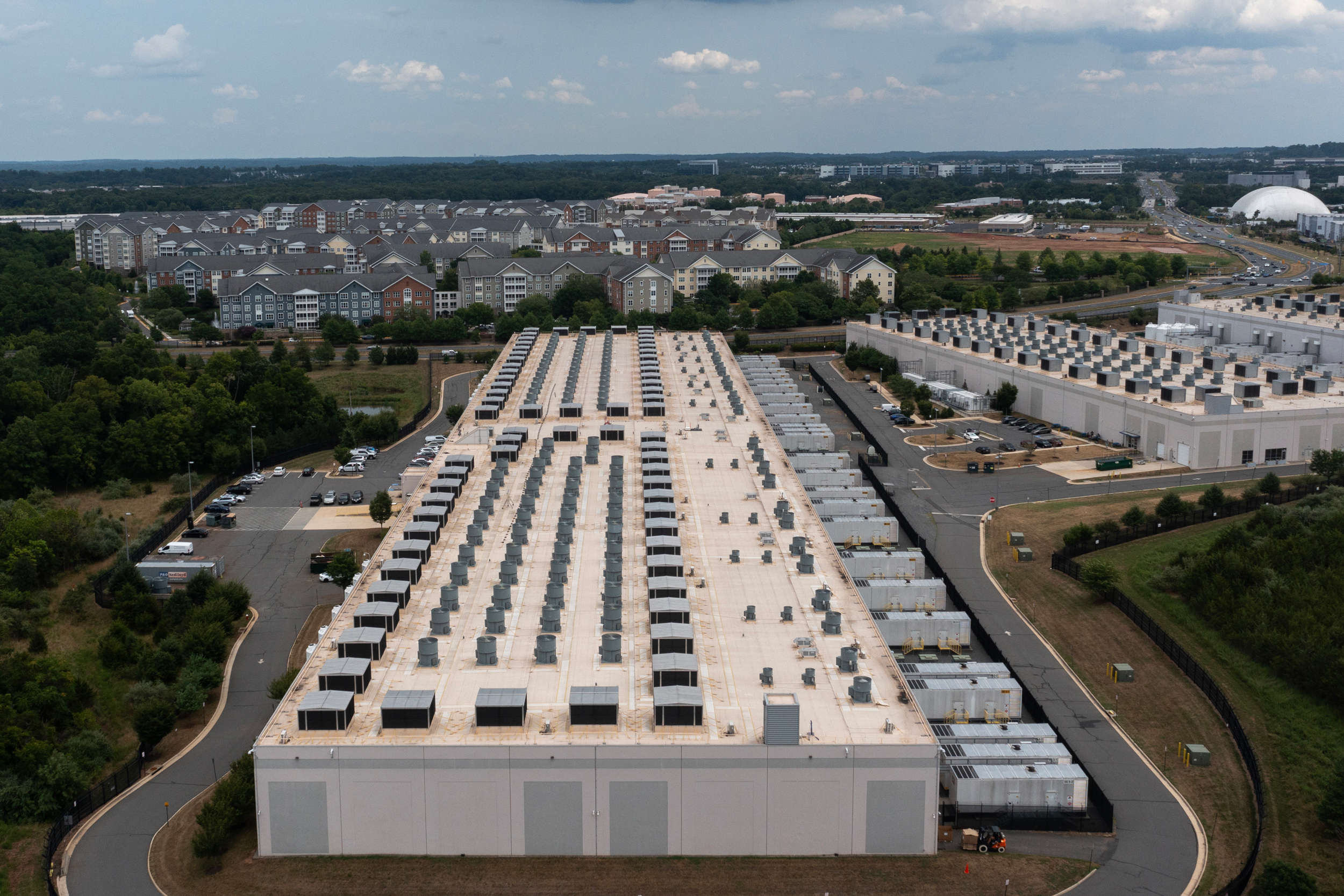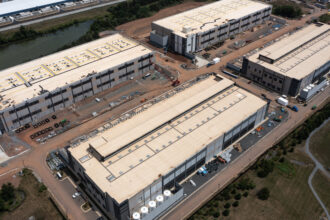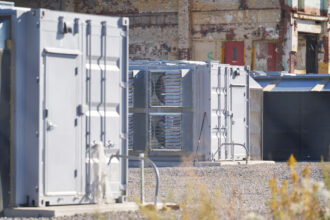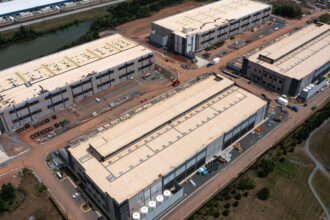As plans to build huge data centers multiply across the United States, some Pennsylvania communities are pushing back.
Responding to public opposition, commissioners in Hampden Township, near Harrisburg, voted in September against allowing data centers in office park zones.
In the borough of Blakely, northeast of Scranton, a developer dropped plans for a data center that same month after local protests.
And in Anthony Township in central Pennsylvania, a citizens group is urging municipal leaders to reject an application by Talen Energy, a power-generating company, to rezone 1,300 acres near one of its power plants to an industrial classification that could be used for a data center.
“To pick up that much land and build any kind of industry would be very detrimental to the whole rural atmosphere,” said Sam Burleigh, a co-founder of the group, Concerned Citizens of Montour County.
Taryne Williams, a spokesperson for Talen Energy, said a change to industrial zoning would align with the classification of other Talen-owned land in the area.
“We are still assessing the viability of potential projects, and the rezoning request will help support any possible future development opportunity near the plant, which could include data centers,” Williams said.
Data centers power the internet, but what’s driving the new increase in proposals around the country—many of them supersized—is artificial intelligence. Boosters say these complexes are big taxpayers and bring jobs. Critics often cite the intense buildout in Northern Virginia as an illustration of the effect they can have on communities, from constant low-frequency noise to spiking electric bills and major water usage.
Data-center developers warned the Virginia utility Dominion Energy at the end of last year that their upcoming projects would need 40 gigawatts of electricity—the energy equivalent of increasing Virginia’s households nearly fourfold.
Dominion plans to respond by building more natural gas power plants, which could raise utility bills for households and businesses while increasing carbon emissions.
Many data centers also have on-site diesel generators that are meant for backup power but are being run more frequently, worsening air quality and prompting noise complaints from residents.
“We’ve seen the devastating impact of these hyper-scale data centers in other states. We applaud Hampden Township for standing up against this water and energy guzzling industry,” said Virginia Marcille-Kerslake, eastern Pennsylvania organizer for the nonprofit Food & Water Watch, which took credit for mobilizing public opposition to the proposed zoning change there.
Some 300 Hampden residents signed a petition opposing the zoning change. The town’s seven commissioners voted unanimously against it.
“When we caught wind that Hampden was doing this, we created a flyer with a QR code to raise awareness,” Marcille-Kerslake said. “We started knocking on doors, and nobody knew about it but as word started to spread, the comments people made were so well-informed.”
Marcille-Kerslake urged municipalities to restrict data centers to industrial zones and away from homes, schools and hospitals. Because of Pennsylvania zoning laws, Food & Water Watch recommends imposing conditions on data centers in the state rather than banning them altogether.
“You have to put it somewhere, so you have to have a very strong ordinance to keep the data center in the industrial district,” she said.
Twenty-one data centers are now planned in Pennsylvania, according to padatacenterproposals.com, a database that tracks the projects. Many are in the northeastern part of the state.
Among the projects moving forward is one planned by Amazon Web Services in Salem Township, near Wilkes-Barre. The project, one of two Amazon data centers that represent a total investment of $20 billion by the tech giant in Pennsylvania, is expected to use about as much electricity as 750,000 homes.
Not far from there, in Hazle Township, NorthPoint Development is planning a 15-building data center on some 1,280 acres.
And in neighboring Delaware, recently unveiled plans to build a six-million-square-foot data center in the northern part of the state have prompted a bill in New Castle County calling on the developer to ensure that the electric grid will have sufficient capacity to supply the 1,200 megawatts that the giant center would need. Delaware is part of the regional grid run by PJM Interconnection, which also includes Pennsylvania and Virginia, and it’s already under pressure from data-center growth.
The latest version of the New Castle County bill also calls for the developer to plan for the center’s decommissioning so taxpayers are not left with the cost of closing it down.
Developer Starwood Digital Ventures said about 40 percent of the site would be open space, about twice the share required by the county, and around double that typically occupied by data centers around the country.
The company plans to meet the plant’s huge energy needs by connecting to an existing 500-kilovolt power line that is “one of the largest capacity lines that is employed on the U.S. grid,” said Starwood’s CEO, Anthony Balastrieri. “Having access to that infrastructure that already exists is very beneficial.”
This story was updated Oct. 20, 2025, to clarify that Food & Water Watch’s recommendation about imposing conditions on data centers rather than banning them refers to Pennsylvania specifically.
About This Story
Perhaps you noticed: This story, like all the news we publish, is free to read. That’s because Inside Climate News is a 501c3 nonprofit organization. We do not charge a subscription fee, lock our news behind a paywall, or clutter our website with ads. We make our news on climate and the environment freely available to you and anyone who wants it.
That’s not all. We also share our news for free with scores of other media organizations around the country. Many of them can’t afford to do environmental journalism of their own. We’ve built bureaus from coast to coast to report local stories, collaborate with local newsrooms and co-publish articles so that this vital work is shared as widely as possible.
Two of us launched ICN in 2007. Six years later we earned a Pulitzer Prize for National Reporting, and now we run the oldest and largest dedicated climate newsroom in the nation. We tell the story in all its complexity. We hold polluters accountable. We expose environmental injustice. We debunk misinformation. We scrutinize solutions and inspire action.
Donations from readers like you fund every aspect of what we do. If you don’t already, will you support our ongoing work, our reporting on the biggest crisis facing our planet, and help us reach even more readers in more places?
Please take a moment to make a tax-deductible donation. Every one of them makes a difference.
Thank you,











